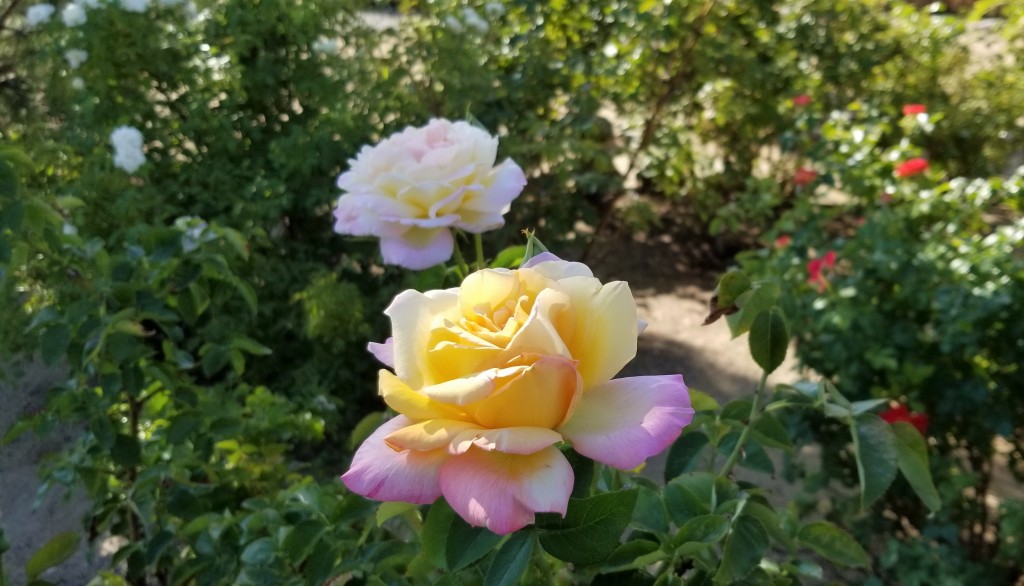Spring in the garden is rolling out just as Mother Nature intended.
The daffodils, crocus, and tulips were the first to emerge from their winter sleep, dotting the landscape with pastel splashes of hope. As they took their last bows, the crabapple trees and lilacs burst onstage with showy displays of pink, magenta, purple, and white. Today the moonlight and lydia broom are happily hosting honeybees in their cheerful, yellow blossoms. Perhaps tomorrow the roses will bloom.
Every year I watch this gradual awakening in amazement. Every living thing in the garden knows its purpose and its time. It’s the most harmonious thing I’ve ever seen. It reminds me of a fine orchestra playing a classic symphony. The woodwinds, strings, percussion, and brass all have unique parts in the arrangement but somehow manage to blend together in consummate crescendo.
I’d like to say that this picture brings pleasant music to my heart and my lips – perhaps Pete Seeger’s 1962 Turn, Turn, Turn or John Denver’s 1971 Sunshine on My Shoulders. Normally, I think it would. But today it makes me sad – sad that the same sweet harmony I see in my garden is not likely to ever roll across humanity and push society forward in a way that benefits all.
All the hate and fighting that has tainted our world for centuries is finding fresh, new battlegrounds every day. Whether the issue is politics, religion, disease, natural disasters, power or money, humankind uses it as fodder for more division, more blame, more discord. It seems there is no appetite in this world for peace, or at least there is not enough hunger for it.
Even I – a self-described Pollyanna – am having trouble seeing a way out of the darkness that’s enveloping every corner of the planet. Each day it gets harder to look at the bright side of life, harder to share the joy that can still be found if we care to look for it. It’s disheartening, to be sure.
And yet, I persist. Because that is my purpose. I’ve spent most of my life trying to make the world a better place by helping others, writing stories laced with lessons, and otherwise letting my light shine. When God assigned me to this Earth, He put a pen in my pocket, a smile on my face, and a kind word on my lips. This is no time to throw away my tools and give up.
Like the plants in my garden and the instruments in an orchestra, I will continue to play my part. I can only hope that what I do – and what others like me also do – brings some measure of peace to this troubled world. Even if I write only one story that inspires someone, share one smile that comforts someone, or say one kind word that encourages someone, it will be worth the effort.
Maybe I’m ready for a song now. With thanks to John Lennon … “You may say I’m a dreamer, but I’m not the only one. I hope someday you’ll join us, and the world will be as one.”



